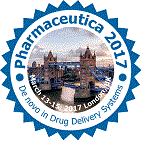
Victoria Sherwood
University of Dundee, UK
Title: An early developmental vertebrate model to assess nanomaterial safety
Biography
Biography: Victoria Sherwood
Abstract
Statement of the Problem: We are developing targeted, drug-loaded nanocarriers for treating the most aggressive forms of skin cancer (Baldelli Bombelli et al., 2014). These nanoformulations are complex, multicomponent drug delivery devices, which due to their high surface area-to-volume ratio and complexity in the materials used for construction, have the potential to result in toxicity when administered to patients. Thus, robust safety assessment is a major concern when developing such nanotherapeutic agents for the clinic.
Methodology & Theoretical Orientation: We have developed a system to rapidly and robustly assess nanoparticle (NP) safety, early on in the development process of novel nanotherapeutics (Webster et al., 2016; Al-Yousuf et al., 2017). This enables us to optimize the NP design and/or synthesis protocol in order to obtain nanotherapies that are safe for use in patients. Cell-based assays are the most commonly used approach for nanotoxicity assessment, but these methods are known to provide poor in vitro-in vivo correlations. We have incorporated an early developmental vertebrate phenotypic screening assay using Xenopus laevis as a model organism, into our nanotoxicity assessment protocol, to complement the cytotoxicity data. Combining data from these two nanotoxicity assessment approaches, provides an overall NP hazard assessment index. This index can inform researchers whether or not to progress with further assessment of NP safety in expensive, more labor/time intensive mammalian models, or to first refine the nanoformulation (Figure 1).
Findings: Using this approach, we assessed NP safety using a variety of nanomaterials (including formulations developed for biomedical applications). The approach could predict NP safety as confirmed through in vivo assessment in mice.
Conclusion & Significance: This work highlights the potential of early developmental models as a rapid screening tool for nanomaterial safety and suggests that such models could be incorporated into routine nanotoxicity assessment protocols.

